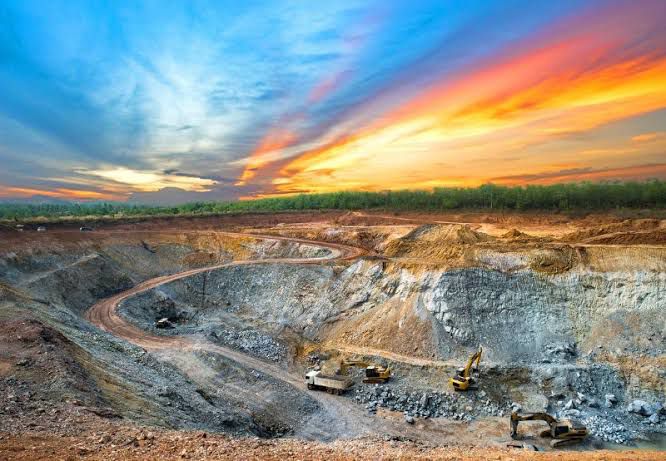In the 21st-century geopolitical landscape, rare earth elements (REEs) have become the new oil—foundational to cutting-edge technologies, clean energy transitions, and national security frameworks. As global powers scramble to secure their place in this emerging order, India—long a passive observer—is now shifting gears decisively.
India’s Untapped Advantage: Third-Largest Reserves
According to the U.S. Geological Survey, India possesses 6.9 million metric tons of rare earth
reserves, trailing only China and Brazil. Yet, only a fraction of this potential is mined or monetized.
Private investment has historically remained tepid deterred by policy opacity, underdeveloped
refining infrastructure, and a nascent domestic value chain. This mismatch between geological
wealth and industrial inertia has kept India marginal in the global critical mineral supply chain—
until now.
From Latent Potential to Strategic Assertiveness
In April 2025, the Indian government launched the National Critical Mineral Mission (NCMM)—
a Rs 34,300 crore flagship initiative aimed at securing self-reliance across the entire value chain
of critical minerals such as lithium, cobalt, nickel, graphite, and rare earth elements.
Key features of the NCMM include:
• Rs 1,500 crore earmarked in the Union Budget for strategic mineral recycling
• Rs 18,000 crore commitment expected from Public Sector Enterprises
• Focus on neodymium, a high-demand rare earth used in permanent magnets for EVs,
electronics, and renewable energy systems
• Emphasis on domestic exploration, international partnerships, and overseas block acquisition
India is finally beginning to align mineral strategy with its clean energy ambitions, industrial
policy, and geopolitical calculus.
China’s Chokehold: A Strategic Catalyst
This renewed urgency is driven not only by opportunity but also by exposure to China’s
dominance:
• 70% of global REE mining
• 90% of RE refining
• 95% of global production of high-strength REE magnets
China’s mineral supremacy isn’t just about extraction—it’s about processing, refining, and value
addition. In 2025 alone, India imported 870 tonnes of REE magnets valued at Rs 306 crore, primarily from Chinese firms.
Even with end-user certificates sanctioned by Chinese embassies, Indian manufacturers report
license delays and commercial coercion—being forced to purchase entire motor assemblies instead of just magnets. This inflates costs and undermines Indian competitiveness across automotive, aerospace, defense, and electronics sectors.
Weaponizing Minerals: A Chinese Playbook
Beijing’s mineral leverage is no accident. It has been years in the making:
• 2010: China halted REE exports to Japan over a territorial dispute
• 2020: It enacted the Export Control Law, empowering it to restrict critical minerals, technology, and even data
• 2024–25: China placed rare earth magnets under a tight export license regime, stalling production lines across Europe and triggering global alarm
Even if nations explore or mine rare earths domestically, processing bottlenecks in China mean
they’re still tethered to Beijing’s whims. This is precisely the dependency India seeks to escape.
India’s Multilateral Pivot: Diversifying Diplomacy
Recognizing the urgency of supply chain diversification, India is forging strategic mineral
alliances globally.
At the recent India-Central Asia Dialogue in New Delhi, India and five Central Asian countries
committed to joint exploration of rare earths and other critical minerals. The creation of an India–
Central Asia Rare Earth Forum signals growing geopolitical momentum.
India is also actively pursuing:
• Overseas block acquisitions in mineral-rich regions
• R&D collaborations for advanced processing technologies
• Incentives for mineral recycling—making sustainability a parallel track to exploration
From Mission to Momentum: Building Resilience
The NCMM is more than a mission—it is a strategic turning point.
It marks India’s pivot from a reactive importer to a forward-leaning global player in the mineral
economy. Through budgetary resolve, diplomatic outreach, and industrial innovation, India is
building a critical minerals ecosystem that is resilient, responsive, and regionally integrated.
Why does this matter?
Because REEs are the backbone of modern economies—powering electric vehicles, solar cells,
wind turbines, semiconductors, medical devices, and next-generation military platforms.
Whoever controls these minerals controls the future.
Conclusion: Seizing the Decisive Decade
India’s moment in the critical mineral arena has arrived. With the right mix of ambition,
execution, and strategic foresight, it can reduce vulnerability to supply shocks, attract global
investment, and strengthen national security.
As China sharpens its mineral leverage, the world needs alternatives. India is no longer content
watching from the sidelines. It is suiting up—diplomatically, technologically, and financially—to
become a resilient pillar in the global mineral supply chain.
The world is watching. The next move is India’s.

